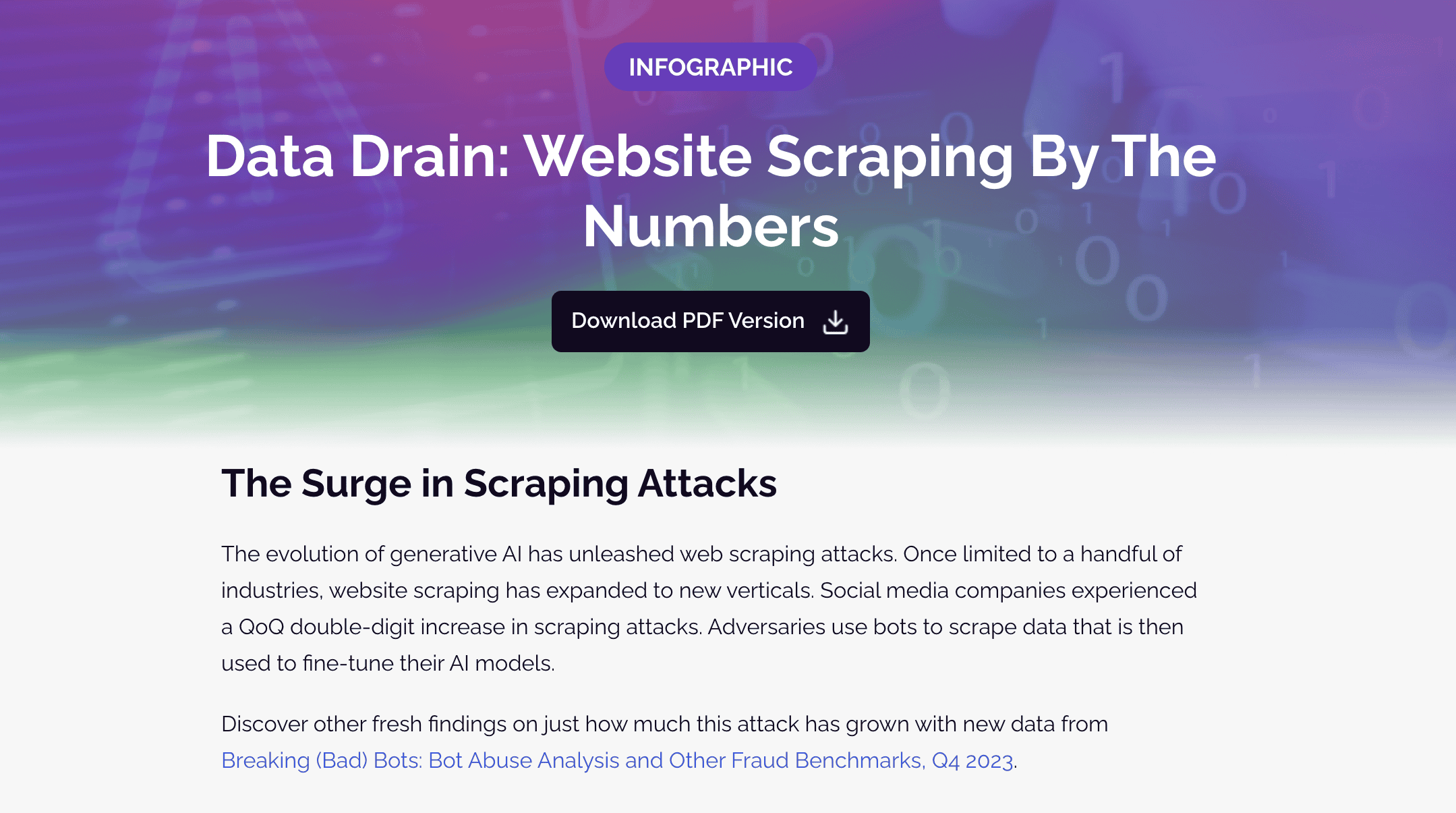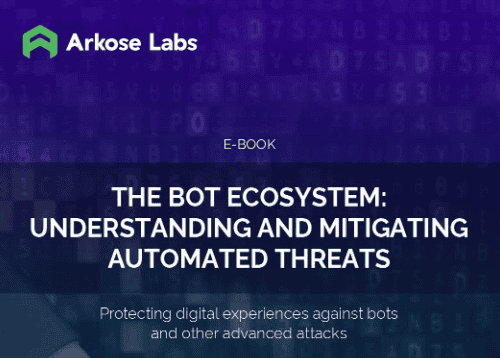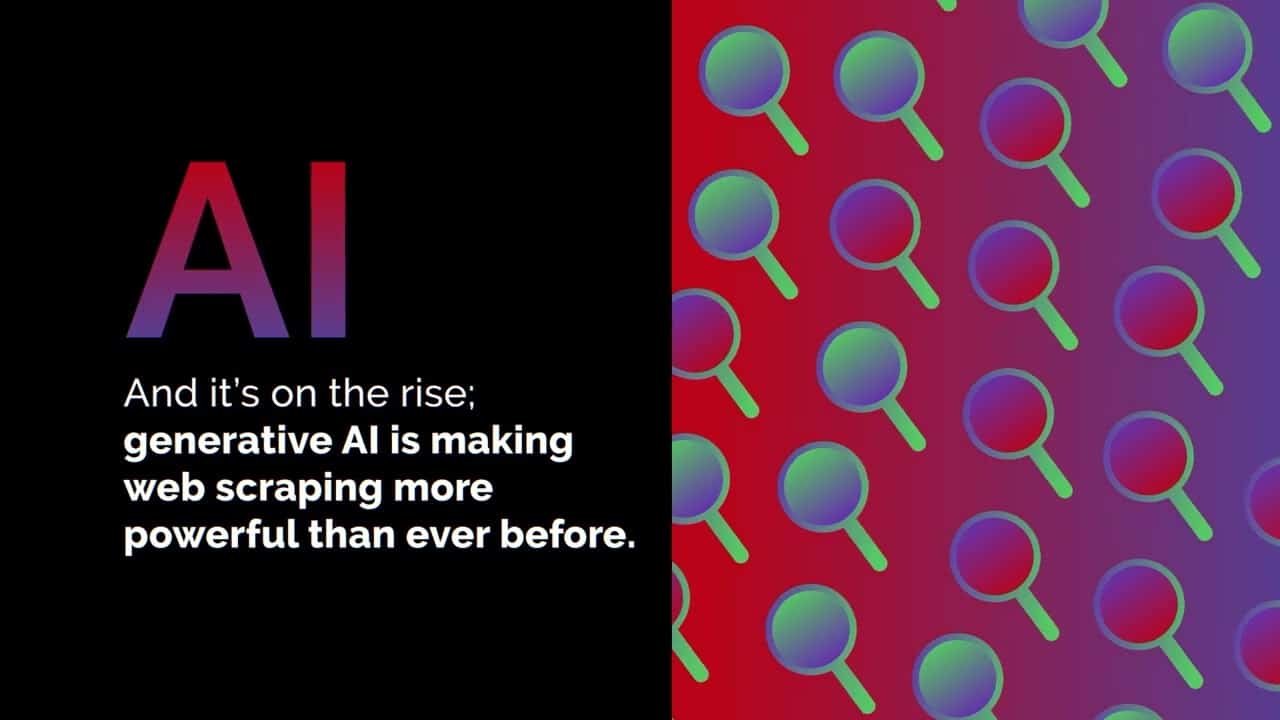OVERVIEW
Make your content work for your customers, not your competitors.
Unauthorized web scraping drains resources, exposes sensitive data, and gives competitors an unfair advantage. Protect your intellectual property – and profitability – with Arkose Labs.
Current size of web scraping software market
Source: Research NesterProjected size of web scraping software market, 2036
Source: Research NesterCAGR of web scraping software market by 2036
Source: Research NesterSOLUTION BENEFITS
Grind down cyberscrapers before they strike.
Fortified Competitive Edge
Protect pricing information from being used by competitors to undercut your business.
Resource Optimization
Lower bandwidth and server costs caused by unauthorized scraping.
Enhanced Experiences
Ensure a smooth, responsive experience for real users by preventing performance degradation.
FEATURED SUCCESS STORIES
Industry tested. Industry approved.
TRAVEL SITE
6x
SOCIAL NETWORKING SITE
$10B+
HOW IT WORKS
Scraping bots beware: Access denied.
We use a combined detection and mitigation approach that stops web scraping when triggering an event such as a search query.
Immediate Risk Assessment
Our detection engine uses hundreds of data signals to confidently identify suspicious activities.
Comprehensive Mitigation
True/false API results and rich data payload allow for immediate action and advanced decisioning.
Adaptive Challenges
Dynamic, evolving challenges force scraper bots to give up and go elsewhere.
WHY CHOOSE ARKOSE LABS
Curbing the onslaught of advanced scraping bots.
Discover how Arkose Labs uniquely protects your valuable content and images by preventing scraping attacks at scale.
Network Effect
Real-time alerts and mitigations are shared across our network, benefiting you and all our customers.
Explore Our Platform24/7/365 SOC
Our Security Operations Center (SOC) specialists and our customer success team are your security force multiplier, collaborating with you for informed decisions.
Explore Our SolutionsUnrivaled Research
Our counterintelligence, threat analysis and disarmament unit, Arkose Cyber Threat Intelligence Research (ACTIR), stops threats before they can reach you.
Explore ACTIRAWARD-WINNING EXCELLENCE
Celebrating our commitment to innovation, customer satisfaction and growth.
RECOMMENDED RESOURCES
Discover the impact of website scraping on today’s businesses.


Website Scraping Threats to Airlines: A Strategic Challenge















